File:StanfordUniversityFootballOffense2007.jpg Wikipedia, the free

Sports is a family group of team sports activities that involve, to varying degrees, kicking a ball with the foot to score an objective. Unqualified, the word football is comprehended to refer to whichever form of soccer is the most popular in the local context in which the word appears. Sports activities commonly called 'football' using places include: association soccer (known as sports in some countries); gridiron sports (specifically American sports or Canadian sports); Australian guidelines football; rugby basketball (either rugby group or rugby union); and Gaelic basketball.[1][2] These different variants of basketball are known as basketball codes.File:House Football.JPG Wikipedia, the free encyclopedia

Various varieties of sports can be recognized in history, as popular peasant video games often. Contemporary codes of football can be traced back to the codification of these games at English public schools during the nineteenth century.[3][4] The expanse of the English Empire allowed these rules of football to propagate to regions of British influence beyond the directly controlled Empire.[5] By the end of the nineteenth century, distinct regional rules were already expanding: Gaelic basketball, for example, deliberately incorporated the rules of local traditional soccer games to be able to maintain their heritage.[6] In 1888, The Basketball Group was founded in Britain, becoming the to begin many professional soccer competitions. Through the twentieth century, many of the various kinds of football started to be some of the most popular team sports on the globe.[7]Mitre Impel Football Training Football Mitre Footballs

The various codes of football show certain common elements: Players in American sports, Canadian football, rugby union and rugby league take up positions in a restricted section of the field in the beginning of the game.[8] They have a tendency to use throwing and working as the primary ways of moving the ball, and only kick on certain limited occasions. Body tackling is a significant skill, and games typically require brief passages of play of 5-90 secs.[8]Football Clipart Black And White Clipart Panda Free Clipart Images

Association football, Australian rules sports and Gaelic basketball have a tendency to use kicking to move the ball around the pitch, with handling more limited. Body tackles are less central to the overall game, and players are freer to go around the field (offside laws and regulations are typically less restrictive).[8]Common rules among the sports include:[9]Two clubs of between 11 and 18 players usually; some variations that have fewer players (five or more per team) are also popular.A plainly defined area in which to play the game.Scoring goals or factors by moving the ball to an opposing team's end of the field and either into an objective area, or over a member of family line.Tips or goals resulting from players placing the ball between two goalposts.The Wolfpack : Leander Football Game11/06/09

The range or goal being defended by the opposing team.Players being required to move the ball--depending on the code--by kicking, transporting, or hand-passing the ball.Players using only their body to move the ball.In all rules, common skills include moving, tackling, evasion of tackles, catching and kicking.[8] In most codes, there are rules restricting the movement of players offside, and players scoring an objective must place the ball either under or higher a crossbar between your goalposts.
 Soccer is a grouped category of team sports that entail, to varying degrees, kicking a ball with the ft . to score a goal. Unqualified, the term football is known to refer to whichever form of soccer is typically the most popular in the local context in which the word appears. Sports commonly called 'soccer' using places include: connection football (known as sports in a few countries); gridiron football (specifically American soccer or Canadian basketball); Australian guidelines football; rugby soccer (either rugby league or rugby union); and Gaelic sports.[1][2] These different variations of sports are known as sports codes.SEC’s dominance in college football over _ for now Salon.com
Soccer is a grouped category of team sports that entail, to varying degrees, kicking a ball with the ft . to score a goal. Unqualified, the term football is known to refer to whichever form of soccer is typically the most popular in the local context in which the word appears. Sports commonly called 'soccer' using places include: connection football (known as sports in a few countries); gridiron football (specifically American soccer or Canadian basketball); Australian guidelines football; rugby soccer (either rugby league or rugby union); and Gaelic sports.[1][2] These different variations of sports are known as sports codes.SEC’s dominance in college football over _ for now Salon.com Various types of sports can be recognized in history, often as popular peasant games. Contemporary codes of football can be traced back to the codification of these games at English public schools during the nineteenth century.[3][4] The expanse of the British Empire allowed these guidelines of football to distributed to areas of British influence beyond the directly managed Empire.[5] By the finish of the nineteenth century, distinct regional codes were already expanding: Gaelic football, for example, intentionally incorporated the guidelines of local traditional sports games to be able to keep up their history.[6] In 1888, The Soccer Category was founded in Britain, becoming the to begin many professional football competitions. During the twentieth century, many of the various varieties of football grew to become some of the most popular team sports activities on the planet.[7]Palomar College FOOTBALL
Various types of sports can be recognized in history, often as popular peasant games. Contemporary codes of football can be traced back to the codification of these games at English public schools during the nineteenth century.[3][4] The expanse of the British Empire allowed these guidelines of football to distributed to areas of British influence beyond the directly managed Empire.[5] By the finish of the nineteenth century, distinct regional codes were already expanding: Gaelic football, for example, intentionally incorporated the guidelines of local traditional sports games to be able to keep up their history.[6] In 1888, The Soccer Category was founded in Britain, becoming the to begin many professional football competitions. During the twentieth century, many of the various varieties of football grew to become some of the most popular team sports activities on the planet.[7]Palomar College FOOTBALL The various codes of football share certain common elements: Players in American sports, Canadian soccer, rugby union and rugby league take up positions in a limited section of the field in the beginning of the game.[8] They have a tendency to use tossing and running as the key ways of moving the ball, in support of kick on certain limited situations. Body tackling is a significant skill, and video games typically entail short passages of play of 5-90 seconds.[8]Zorb Football The ultimate fun team game, bounce around and kick a
The various codes of football share certain common elements: Players in American sports, Canadian soccer, rugby union and rugby league take up positions in a limited section of the field in the beginning of the game.[8] They have a tendency to use tossing and running as the key ways of moving the ball, in support of kick on certain limited situations. Body tackling is a significant skill, and video games typically entail short passages of play of 5-90 seconds.[8]Zorb Football The ultimate fun team game, bounce around and kick a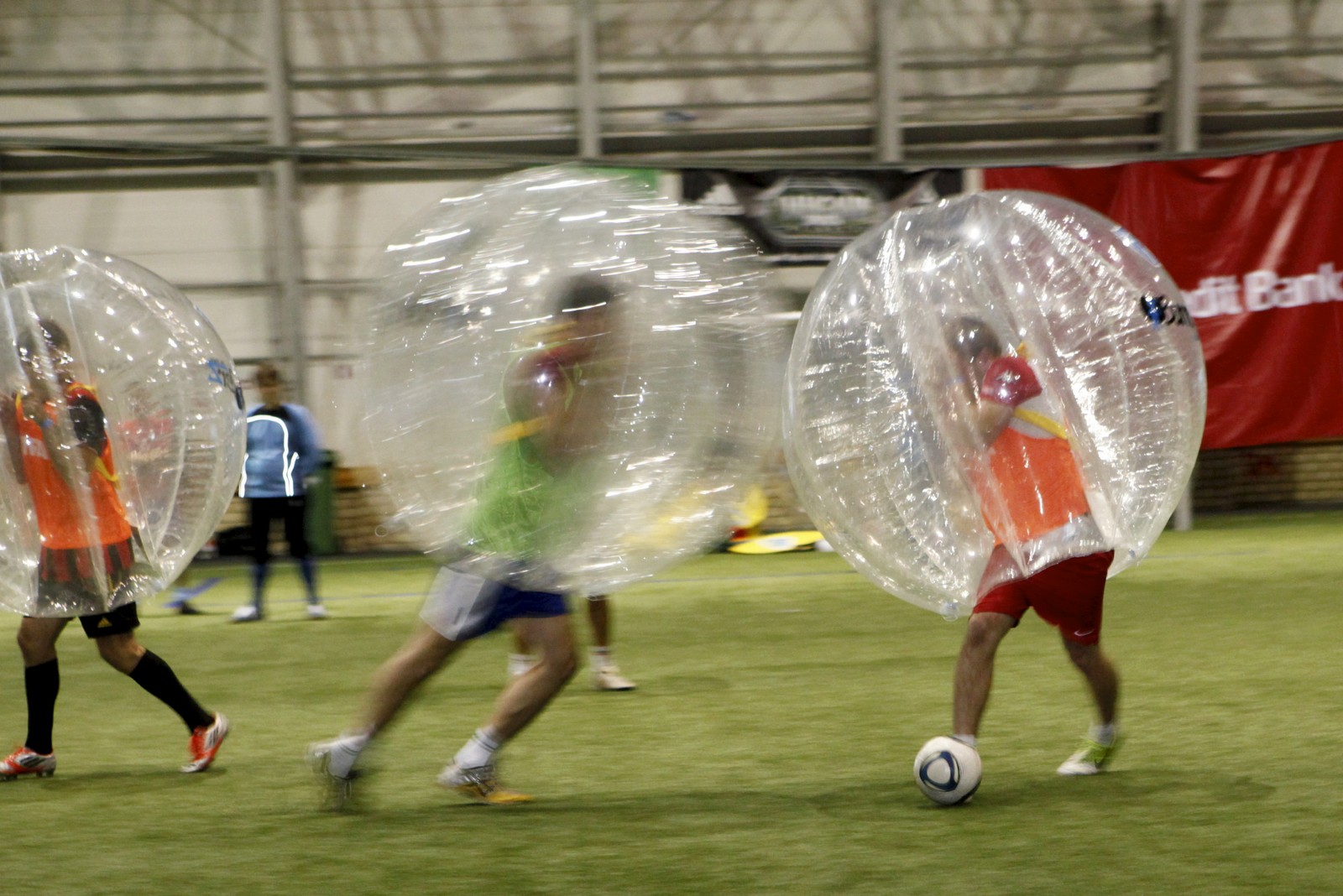 Association sports, Australian rules soccer and Gaelic sports have a tendency to use kicking to go the ball throughout the pitch, with controlling more limited. Body tackles are less central to the overall game, and players are freer to move across the field (offside laws are typically less restrictive).[8]Common rules among the list of sports include:[9]Two groups of usually between 11 and 18 players; some variations which may have fewer players (five or more per team) are also popular.A obviously defined area in which to play the game.Scoring goals or points by moving the ball to an opposing team's end of the field and either into an objective area, or over a member of family range.Goals or points caused by players adding the ball between two goalposts.HS FOOTBALL PLAYOFF PREVIEW: Arlington vs. New Rochelle Hudson
Association sports, Australian rules soccer and Gaelic sports have a tendency to use kicking to go the ball throughout the pitch, with controlling more limited. Body tackles are less central to the overall game, and players are freer to move across the field (offside laws are typically less restrictive).[8]Common rules among the list of sports include:[9]Two groups of usually between 11 and 18 players; some variations which may have fewer players (five or more per team) are also popular.A obviously defined area in which to play the game.Scoring goals or points by moving the ball to an opposing team's end of the field and either into an objective area, or over a member of family range.Goals or points caused by players adding the ball between two goalposts.HS FOOTBALL PLAYOFF PREVIEW: Arlington vs. New Rochelle Hudson The range or goal being defended by the opposing team.Players being necessary to move the ball--depending on the code--by kicking, hauling, or hand-passing the ball.Players using only their body to go the ball.In all codes, common skills include transferring, tackling, evasion of tackles, catching and kicking.[8] In most codes, there are rules restricting the movement of players offside, and players scoring the ball must be placed by a goal either under or higher a crossbar between the goalposts.
The range or goal being defended by the opposing team.Players being necessary to move the ball--depending on the code--by kicking, hauling, or hand-passing the ball.Players using only their body to go the ball.In all codes, common skills include transferring, tackling, evasion of tackles, catching and kicking.[8] In most codes, there are rules restricting the movement of players offside, and players scoring the ball must be placed by a goal either under or higher a crossbar between the goalposts.
 Various types of sports can be recognized in history, as popular peasant game titles often. Contemporary codes of football can be traced back to the codification of the games at English public schools during the nineteenth century.[3][4] The expanse of the Uk Empire allowed these rules of basketball to pass on to areas of British influence beyond the directly controlled Empire.[5] By the finish of the nineteenth hundred years, distinct regional rules were already expanding: Gaelic football, for example, intentionally incorporated the rules of local traditional football games in order to keep up their heritage.[6] In 1888, The Sports Group was founded in Great britain, becoming the first of many professional soccer competitions. During the twentieth century, many of the various sorts of football grew to become some of the most popular team sports on the globe.[7]File:CAL football.jpg
Various types of sports can be recognized in history, as popular peasant game titles often. Contemporary codes of football can be traced back to the codification of the games at English public schools during the nineteenth century.[3][4] The expanse of the Uk Empire allowed these rules of basketball to pass on to areas of British influence beyond the directly controlled Empire.[5] By the finish of the nineteenth hundred years, distinct regional rules were already expanding: Gaelic football, for example, intentionally incorporated the rules of local traditional football games in order to keep up their heritage.[6] In 1888, The Sports Group was founded in Great britain, becoming the first of many professional soccer competitions. During the twentieth century, many of the various sorts of football grew to become some of the most popular team sports on the globe.[7]File:CAL football.jpg Association football, Australian rules sports and Gaelic basketball tend to use kicking to go the ball throughout the pitch, with handling more limited. Body tackles are less central to the game, and players are freer to go surrounding the field (offside laws and regulations are typically less strict).[8]Common rules among the sports include:[9]Two teams of usually between 11 and 18 players; some variations that contain fewer players (five or more per team) are also popular.A defined area in which to play the game clearly.Rating goals or points by moving the ball to a opposing team's end of the field and either into an objective area, or higher a member of family line.Factors or goals caused by players placing the ball between two goalposts.File:CAL football.jpg
Association football, Australian rules sports and Gaelic basketball tend to use kicking to go the ball throughout the pitch, with handling more limited. Body tackles are less central to the game, and players are freer to go surrounding the field (offside laws and regulations are typically less strict).[8]Common rules among the sports include:[9]Two teams of usually between 11 and 18 players; some variations that contain fewer players (five or more per team) are also popular.A defined area in which to play the game clearly.Rating goals or points by moving the ball to a opposing team's end of the field and either into an objective area, or higher a member of family line.Factors or goals caused by players placing the ball between two goalposts.File:CAL football.jpg Sports is a grouped family of team athletics that involve, to varying certifications, kicking a ball with the foot to score a goal. Unqualified, the word football is known to refer to whichever form of soccer is typically the most popular in the regional context in which the word appears. Activities commonly called 'basketball' in certain places include: relationship basketball (known as sports in a few countries); gridiron soccer (specifically American basketball or Canadian football); Australian rules football; rugby basketball (either rugby category or rugby union); and Gaelic soccer.[1][2] These different variations of basketball are known as basketball codes.college football kicked of and it was good well professional football
Sports is a grouped family of team athletics that involve, to varying certifications, kicking a ball with the foot to score a goal. Unqualified, the word football is known to refer to whichever form of soccer is typically the most popular in the regional context in which the word appears. Activities commonly called 'basketball' in certain places include: relationship basketball (known as sports in a few countries); gridiron soccer (specifically American basketball or Canadian football); Australian rules football; rugby basketball (either rugby category or rugby union); and Gaelic soccer.[1][2] These different variations of basketball are known as basketball codes.college football kicked of and it was good well professional football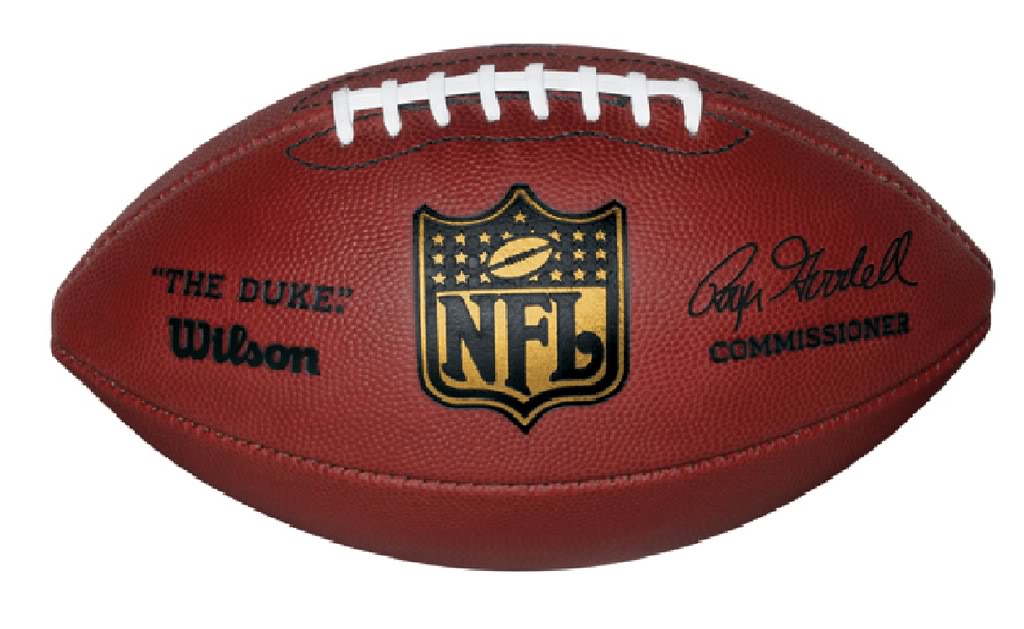 Various varieties of football can be recognized in history, often as popular peasant game titles. Contemporary codes of football can be traced back to the codification of the games at English public schools during the nineteenth century.[3][4] The expanse of the English Empire allowed these guidelines of soccer to distributed to areas of British influence beyond the directly handled Empire.[5] By the end of the nineteenth hundred years, distinct regional codes were already expanding: Gaelic soccer, for example, intentionally incorporated the guidelines of local traditional soccer games in order to keep their heritage.[6] In 1888, The Basketball Group was founded in Great britain, becoming the to begin many professional soccer competitions. Through the twentieth century, many of the various varieties of football started to be a few of the most popular team athletics in the world.[7]Football football wallpaper
Various varieties of football can be recognized in history, often as popular peasant game titles. Contemporary codes of football can be traced back to the codification of the games at English public schools during the nineteenth century.[3][4] The expanse of the English Empire allowed these guidelines of soccer to distributed to areas of British influence beyond the directly handled Empire.[5] By the end of the nineteenth hundred years, distinct regional codes were already expanding: Gaelic soccer, for example, intentionally incorporated the guidelines of local traditional soccer games in order to keep their heritage.[6] In 1888, The Basketball Group was founded in Great britain, becoming the to begin many professional soccer competitions. Through the twentieth century, many of the various varieties of football started to be a few of the most popular team athletics in the world.[7]Football football wallpaper The various codes of football share certain common elements: Players in American sports, Canadian soccer, rugby union and rugby little league take up positions in a restricted section of the field in the beginning of the game.[8] They tend to use tossing and working as the primary means of moving the ball, and only kick on certain limited occasions. Body tackling is a significant skill, and game titles typically entail brief passages of play of 5-90 seconds.[8]Argentina’s football team pose before a friendly match against
The various codes of football share certain common elements: Players in American sports, Canadian soccer, rugby union and rugby little league take up positions in a restricted section of the field in the beginning of the game.[8] They tend to use tossing and working as the primary means of moving the ball, and only kick on certain limited occasions. Body tackling is a significant skill, and game titles typically entail brief passages of play of 5-90 seconds.[8]Argentina’s football team pose before a friendly match against Association soccer, Australian rules football and Gaelic basketball tend to use kicking to move the ball round the pitch, with managing more limited. Body tackles are less central to the overall game, and players are freer to move round the field (offside laws and regulations are typically less strict).[8]Common rules one of the sports include:[9]Two clubs of usually between 11 and 18 players; some variations that have fewer players (five or more per team) are also popular.A obviously defined area in which to play the game.Credit scoring goals or things by moving the ball to the opposing team's end of the field and either into a goal area, or over a line.Goals or tips resulting from players placing the ball between two goalposts.File:College football Rice Owls vs Texas Longhorns.jpg Wikimedia
Association soccer, Australian rules football and Gaelic basketball tend to use kicking to move the ball round the pitch, with managing more limited. Body tackles are less central to the overall game, and players are freer to move round the field (offside laws and regulations are typically less strict).[8]Common rules one of the sports include:[9]Two clubs of usually between 11 and 18 players; some variations that have fewer players (five or more per team) are also popular.A obviously defined area in which to play the game.Credit scoring goals or things by moving the ball to the opposing team's end of the field and either into a goal area, or over a line.Goals or tips resulting from players placing the ball between two goalposts.File:College football Rice Owls vs Texas Longhorns.jpg Wikimedia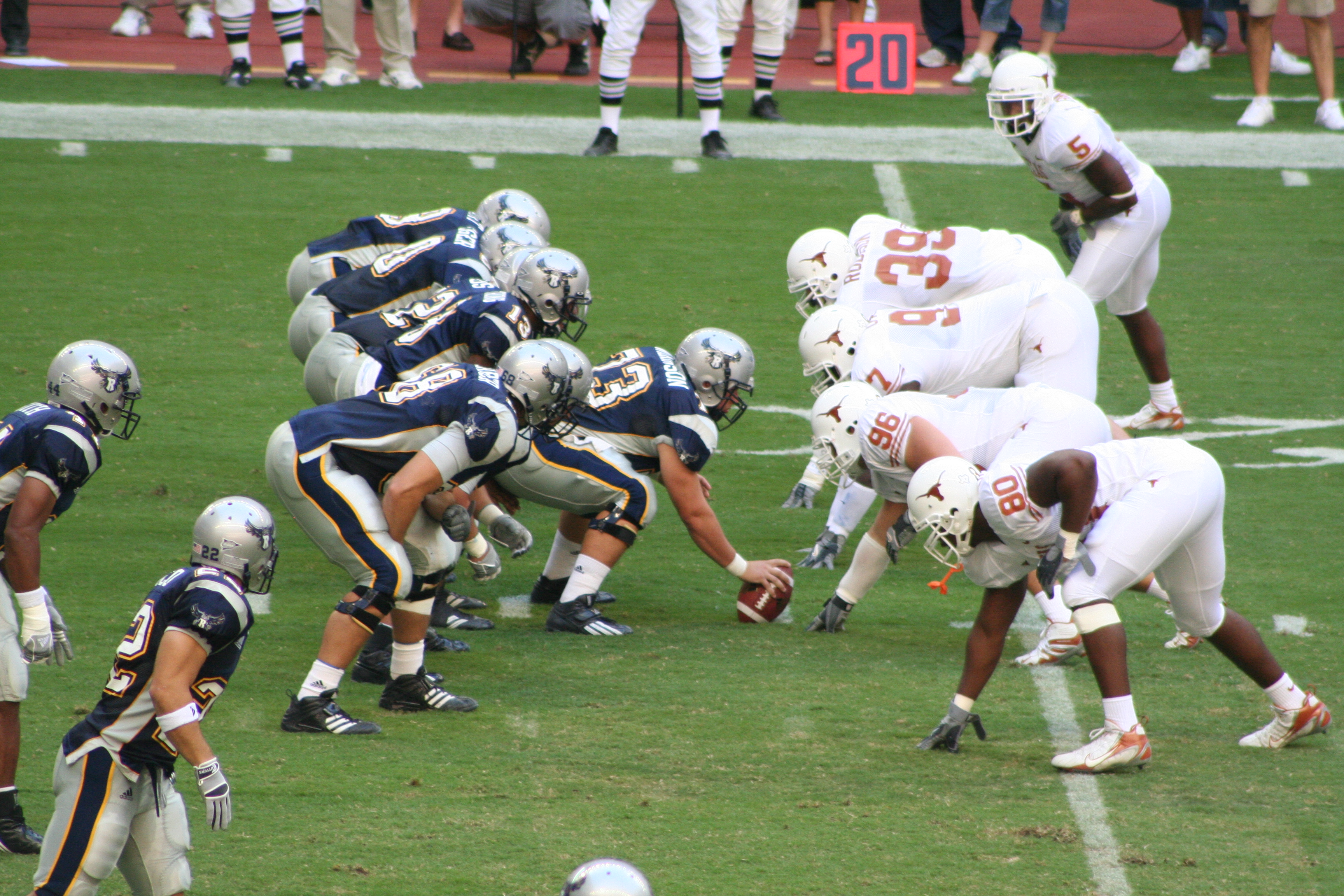 The goal or series being defended by the opposing team.Players being necessary to move the ball--depending on the code--by kicking, carrying, or hand-passing the ball.Players only using their body to go the ball.In all rules, common skills include moving, tackling, evasion of tackles, kicking and catching.[8] In most codes, there are rules restricting the movement of players offside, and players scoring a goal must place the ball either under or over a crossbar between the goalposts.
The goal or series being defended by the opposing team.Players being necessary to move the ball--depending on the code--by kicking, carrying, or hand-passing the ball.Players only using their body to go the ball.In all rules, common skills include moving, tackling, evasion of tackles, kicking and catching.[8] In most codes, there are rules restricting the movement of players offside, and players scoring a goal must place the ball either under or over a crossbar between the goalposts.
 Sports is a family group of team sports activities that involve, to varying degrees, kicking a ball with the foot to score an objective. Unqualified, the word football is comprehended to refer to whichever form of soccer is the most popular in the local context in which the word appears. Sports activities commonly called 'football' using places include: association soccer (known as sports in some countries); gridiron sports (specifically American sports or Canadian sports); Australian guidelines football; rugby basketball (either rugby group or rugby union); and Gaelic basketball.[1][2] These different variants of basketball are known as basketball codes.File:House Football.JPG Wikipedia, the free encyclopedia
Sports is a family group of team sports activities that involve, to varying degrees, kicking a ball with the foot to score an objective. Unqualified, the word football is comprehended to refer to whichever form of soccer is the most popular in the local context in which the word appears. Sports activities commonly called 'football' using places include: association soccer (known as sports in some countries); gridiron sports (specifically American sports or Canadian sports); Australian guidelines football; rugby basketball (either rugby group or rugby union); and Gaelic basketball.[1][2] These different variants of basketball are known as basketball codes.File:House Football.JPG Wikipedia, the free encyclopedia The various codes of football show certain common elements: Players in American sports, Canadian football, rugby union and rugby league take up positions in a restricted section of the field in the beginning of the game.[8] They have a tendency to use throwing and working as the primary ways of moving the ball, and only kick on certain limited occasions. Body tackling is a significant skill, and games typically require brief passages of play of 5-90 secs.[8]Football Clipart Black And White Clipart Panda Free Clipart Images
The various codes of football show certain common elements: Players in American sports, Canadian football, rugby union and rugby league take up positions in a restricted section of the field in the beginning of the game.[8] They have a tendency to use throwing and working as the primary ways of moving the ball, and only kick on certain limited occasions. Body tackling is a significant skill, and games typically require brief passages of play of 5-90 secs.[8]Football Clipart Black And White Clipart Panda Free Clipart Images Association football, Australian rules sports and Gaelic basketball have a tendency to use kicking to move the ball around the pitch, with handling more limited. Body tackles are less central to the overall game, and players are freer to go around the field (offside laws and regulations are typically less restrictive).[8]Common rules among the sports include:[9]Two clubs of between 11 and 18 players usually; some variations that have fewer players (five or more per team) are also popular.A plainly defined area in which to play the game.Scoring goals or factors by moving the ball to an opposing team's end of the field and either into an objective area, or over a member of family line.Tips or goals resulting from players placing the ball between two goalposts.The Wolfpack : Leander Football Game11/06/09
Association football, Australian rules sports and Gaelic basketball have a tendency to use kicking to move the ball around the pitch, with handling more limited. Body tackles are less central to the overall game, and players are freer to go around the field (offside laws and regulations are typically less restrictive).[8]Common rules among the sports include:[9]Two clubs of between 11 and 18 players usually; some variations that have fewer players (five or more per team) are also popular.A plainly defined area in which to play the game.Scoring goals or factors by moving the ball to an opposing team's end of the field and either into an objective area, or over a member of family line.Tips or goals resulting from players placing the ball between two goalposts.The Wolfpack : Leander Football Game11/06/09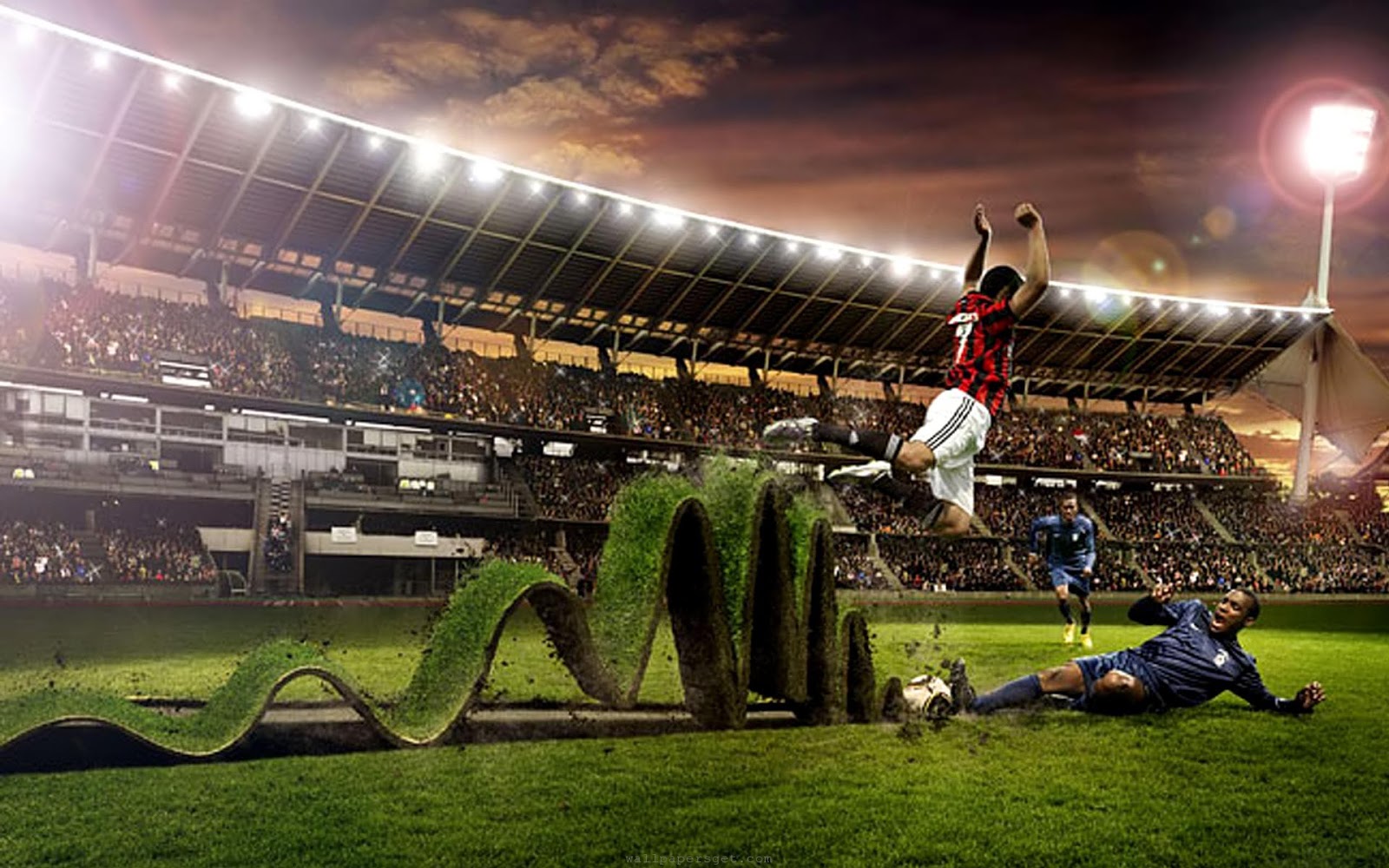 Sports is a family of team sports that involve, to varying certifications, kicking a ball with the feet to score an objective. Unqualified, the term football is comprehended to make reference to whichever form of sports is typically the most popular in the local context in which the word appears. Sports activities commonly called 'soccer' in certain places include: relationship soccer (known as soccer in a few countries); gridiron sports (specifically American soccer or Canadian basketball); Australian rules football; rugby football (either rugby group or rugby union); and Gaelic football.[1][2] These different variations of sports are known as soccer codes.Description Football Germany.png
Sports is a family of team sports that involve, to varying certifications, kicking a ball with the feet to score an objective. Unqualified, the term football is comprehended to make reference to whichever form of sports is typically the most popular in the local context in which the word appears. Sports activities commonly called 'soccer' in certain places include: relationship soccer (known as soccer in a few countries); gridiron sports (specifically American soccer or Canadian basketball); Australian rules football; rugby football (either rugby group or rugby union); and Gaelic football.[1][2] These different variations of sports are known as soccer codes.Description Football Germany.png Various kinds of sports can be determined in history, often as popular peasant video games. Contemporary codes of football can be traced back again to the codification of the games at English public schools during the nineteenth century.[3][4] The expanse of the British Empire allowed these rules of soccer to disperse to regions of British influence beyond the directly manipulated Empire.[5] By the finish of the nineteenth century, distinct regional rules were already growing: Gaelic sports, for example, deliberately incorporated the rules of local traditional football games to be able to keep up their history.[6] In 1888, The Soccer Category was founded in England, becoming the first of many professional sports competitions. During the twentieth century, many of the various kinds of football started to be some of the most popular team sports on earth.[7]Analysis 28 Jul 2014, 11:08 IST Updated : 27 Nov 2015, 13:36 IST
Various kinds of sports can be determined in history, often as popular peasant video games. Contemporary codes of football can be traced back again to the codification of the games at English public schools during the nineteenth century.[3][4] The expanse of the British Empire allowed these rules of soccer to disperse to regions of British influence beyond the directly manipulated Empire.[5] By the finish of the nineteenth century, distinct regional rules were already growing: Gaelic sports, for example, deliberately incorporated the rules of local traditional football games to be able to keep up their history.[6] In 1888, The Soccer Category was founded in England, becoming the first of many professional sports competitions. During the twentieth century, many of the various kinds of football started to be some of the most popular team sports on earth.[7]Analysis 28 Jul 2014, 11:08 IST Updated : 27 Nov 2015, 13:36 IST The various codes of football share certain common elements: Players in American sports, Canadian football, rugby union and rugby group take up positions in a limited section of the field in the beginning of the game.[8] They have a tendency to use throwing and jogging as the main ways of moving the ball, in support of kick on certain limited situations. Body tackling is a significant skill, and game titles involve brief passages of play of 5-90 a few moments typically.[8]Description American football referees.jpg
The various codes of football share certain common elements: Players in American sports, Canadian football, rugby union and rugby group take up positions in a limited section of the field in the beginning of the game.[8] They have a tendency to use throwing and jogging as the main ways of moving the ball, in support of kick on certain limited situations. Body tackling is a significant skill, and game titles involve brief passages of play of 5-90 a few moments typically.[8]Description American football referees.jpg Association sports, Australian rules soccer and Gaelic football have a tendency to use kicking to go the ball around the pitch, with controlling more limited. Body tackles are less central to the game, and players are freer to move about the field (offside laws and regulations are typically less restrictive).[8]Common rules among the list of sports include:[9]Two clubs of between 11 and 18 players usually; some variations that have fewer players (five or even more per team) are also popular.A clearly defined area in which to play the game.Scoring goals or details by moving the ball to a opposing team's end of the field and either into a goal area, or over a line.Goals or tips caused by players adding the ball between two goalposts.American Football Stadium by ezequias
Association sports, Australian rules soccer and Gaelic football have a tendency to use kicking to go the ball around the pitch, with controlling more limited. Body tackles are less central to the game, and players are freer to move about the field (offside laws and regulations are typically less restrictive).[8]Common rules among the list of sports include:[9]Two clubs of between 11 and 18 players usually; some variations that have fewer players (five or even more per team) are also popular.A clearly defined area in which to play the game.Scoring goals or details by moving the ball to a opposing team's end of the field and either into a goal area, or over a line.Goals or tips caused by players adding the ball between two goalposts.American Football Stadium by ezequias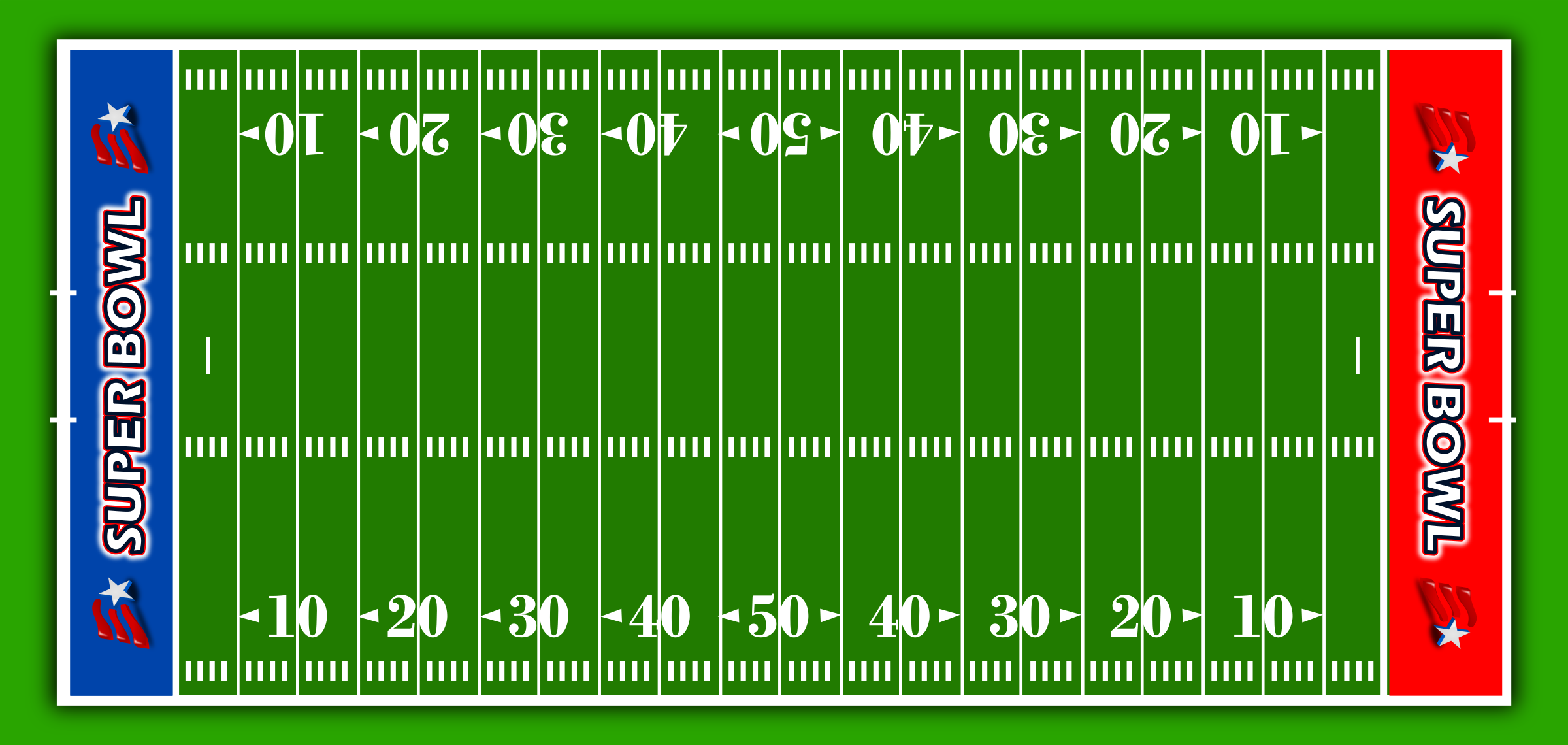 The lines or goal being defended by the opposing team.Players being required to move the ball--depending on the code--by kicking, holding, or hand-passing the ball.Players using only their body to go the ball.In all rules, common skills include transferring, tackling, evasion of tackles, kicking and catching.[8] Generally in most codes, there are rules restricting the movement of players offside, and players scoring an objective must position the ball either under or over a crossbar between your goalposts.
The lines or goal being defended by the opposing team.Players being required to move the ball--depending on the code--by kicking, holding, or hand-passing the ball.Players using only their body to go the ball.In all rules, common skills include transferring, tackling, evasion of tackles, kicking and catching.[8] Generally in most codes, there are rules restricting the movement of players offside, and players scoring an objective must position the ball either under or over a crossbar between your goalposts.
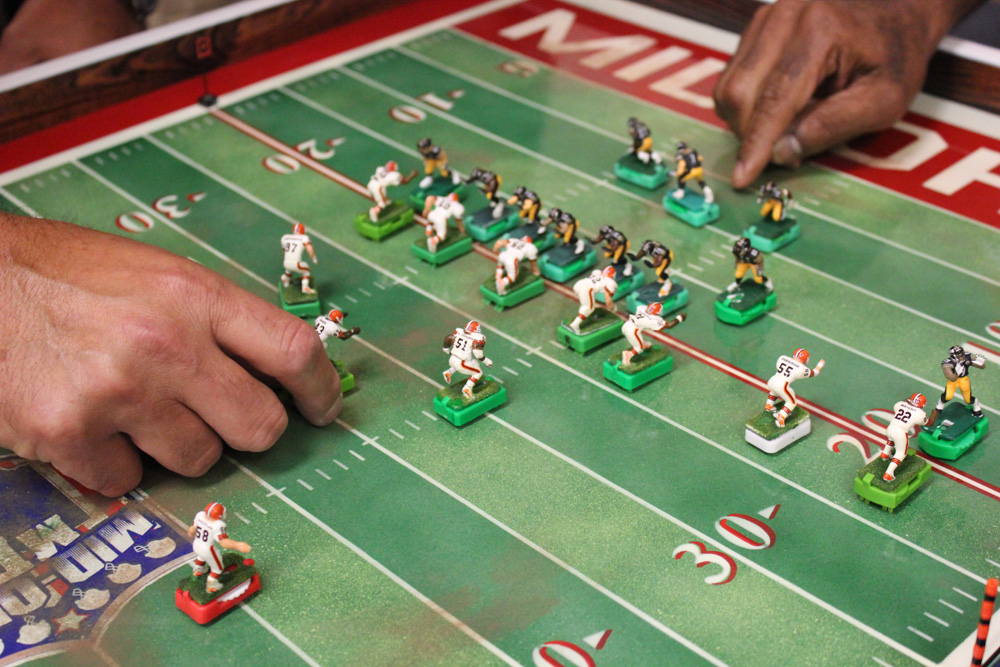 Soccer is a family of team activities that involve, to varying diplomas, kicking a ball with the foot to score a goal. Unqualified, the term football is realized to make reference to whichever form of basketball is typically the most popular in the local context where the word appears. Activities commonly called 'football' using places include: relationship basketball (known as sports in a few countries); gridiron soccer (specifically American sports or Canadian sports); Australian rules football; rugby soccer (either rugby league or rugby union); and Gaelic basketball.[1][2] These different variations of soccer are known as basketball codes.in college football however under june jones in 2000 the
Soccer is a family of team activities that involve, to varying diplomas, kicking a ball with the foot to score a goal. Unqualified, the term football is realized to make reference to whichever form of basketball is typically the most popular in the local context where the word appears. Activities commonly called 'football' using places include: relationship basketball (known as sports in a few countries); gridiron soccer (specifically American sports or Canadian sports); Australian rules football; rugby soccer (either rugby league or rugby union); and Gaelic basketball.[1][2] These different variations of soccer are known as basketball codes.in college football however under june jones in 2000 the Various forms of sports can be identified in history, as popular peasant games often. Contemporary codes of football can be traced back again to the codification of these games at English public schools during the nineteenth century.[3][4] The expanse of the English Empire allowed these guidelines of football to distributed to regions of British influence outside of the directly managed Empire.[5] By the end of the nineteenth century, distinct regional codes were already producing: Gaelic basketball, for example, intentionally incorporated the rules of local traditional basketball games to be able to maintain their history.[6] In 1888, The Football Category was founded in England, becoming the to begin many professional basketball competitions. During the twentieth century, several of the various sorts of football grew to become some of the most popular team athletics in the world.[7]Football OrderSTANDARD12 balls Bubble Football Zorb football
Various forms of sports can be identified in history, as popular peasant games often. Contemporary codes of football can be traced back again to the codification of these games at English public schools during the nineteenth century.[3][4] The expanse of the English Empire allowed these guidelines of football to distributed to regions of British influence outside of the directly managed Empire.[5] By the end of the nineteenth century, distinct regional codes were already producing: Gaelic basketball, for example, intentionally incorporated the rules of local traditional basketball games to be able to maintain their history.[6] In 1888, The Football Category was founded in England, becoming the to begin many professional basketball competitions. During the twentieth century, several of the various sorts of football grew to become some of the most popular team athletics in the world.[7]Football OrderSTANDARD12 balls Bubble Football Zorb football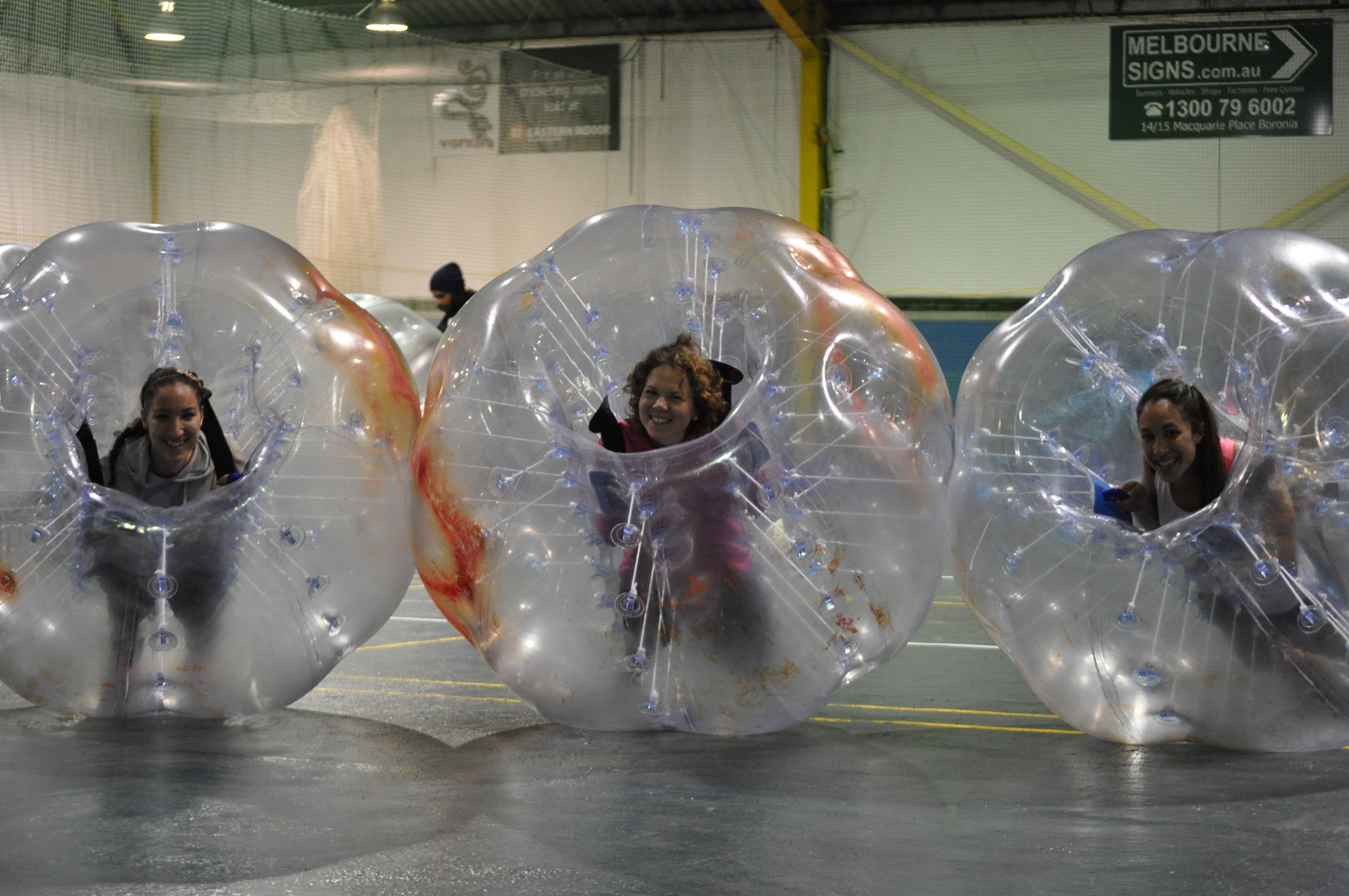 The various codes of football talk about certain common elements: Players in American football, Canadian soccer, rugby union and rugby little league take up positions in a limited section of the field in the beginning of the game.[8] They tend to use tossing and running as the main means of moving the ball, and only kick on certain limited situations. Body tackling is a major skill, and games typically involve brief passages of play of 5-90 seconds.[8]Pics Photos Football Memes
The various codes of football talk about certain common elements: Players in American football, Canadian soccer, rugby union and rugby little league take up positions in a limited section of the field in the beginning of the game.[8] They tend to use tossing and running as the main means of moving the ball, and only kick on certain limited situations. Body tackling is a major skill, and games typically involve brief passages of play of 5-90 seconds.[8]Pics Photos Football Memes Association sports, Australian rules football and Gaelic sports have a tendency to use kicking to move the ball surrounding the pitch, with handling more limited. Body tackles are less central to the overall game, and players are freer to move about the field (offside laws are typically less restrictive).[8]Common rules among the list of sports include:[9]Two teams of usually between 11 and 18 players; some variations that contain fewer players (five or more per team) are also popular.A defined area in which to play the game clearly.Rating goals or things by moving the ball for an opposing team's end of the field and either into an objective area, or higher a relative collection.Goals or things caused by players placing the ball between two goalposts.Football Young Stars: FC Barcelona team Wallpapers 2013
Association sports, Australian rules football and Gaelic sports have a tendency to use kicking to move the ball surrounding the pitch, with handling more limited. Body tackles are less central to the overall game, and players are freer to move about the field (offside laws are typically less restrictive).[8]Common rules among the list of sports include:[9]Two teams of usually between 11 and 18 players; some variations that contain fewer players (five or more per team) are also popular.A defined area in which to play the game clearly.Rating goals or things by moving the ball for an opposing team's end of the field and either into an objective area, or higher a relative collection.Goals or things caused by players placing the ball between two goalposts.Football Young Stars: FC Barcelona team Wallpapers 2013 The brand or goal being defended by the opposing team.Players being required to move the ball--depending on the code--by kicking, hauling, or hand-passing the ball.Players only using their body to go the ball.In all rules, common skills include transferring, tackling, evasion of tackles, catching and kicking.[8] In most codes, there are rules restricting the movement of players offside, and players credit scoring the ball must be placed by a goal either under or over a crossbar between the goalposts.
The brand or goal being defended by the opposing team.Players being required to move the ball--depending on the code--by kicking, hauling, or hand-passing the ball.Players only using their body to go the ball.In all rules, common skills include transferring, tackling, evasion of tackles, catching and kicking.[8] In most codes, there are rules restricting the movement of players offside, and players credit scoring the ball must be placed by a goal either under or over a crossbar between the goalposts.
 Sports is a grouped category of team activities that involve, to varying certifications, kicking a ball with the feet to score a goal. Unqualified, the word football is recognized to make reference to whichever form of sports is typically the most popular in the local context where the word appears. Sports commonly called 'sports' in certain places include: connection football (known as soccer in a few countries); gridiron soccer (specifically American soccer or Canadian basketball); Australian rules football; rugby basketball (either rugby league or rugby union); and Gaelic football.[1][2] These different modifications of sports are known as sports codes.Try it with a football, or the 39;golfball39; near the lake, or the star
Sports is a grouped category of team activities that involve, to varying certifications, kicking a ball with the feet to score a goal. Unqualified, the word football is recognized to make reference to whichever form of sports is typically the most popular in the local context where the word appears. Sports commonly called 'sports' in certain places include: connection football (known as soccer in a few countries); gridiron soccer (specifically American soccer or Canadian basketball); Australian rules football; rugby basketball (either rugby league or rugby union); and Gaelic football.[1][2] These different modifications of sports are known as sports codes.Try it with a football, or the 39;golfball39; near the lake, or the star Various kinds of basketball can be determined in history, often as popular peasant video games. Contemporary codes of football can be traced back again to the codification of the games at English public schools through the nineteenth century.[3][4] The expanse of the Uk Empire allowed these guidelines of sports to pass on to regions of British influence beyond the directly managed Empire.[5] By the end of the nineteenth century, distinct regional codes were already producing: Gaelic soccer, for example, deliberately incorporated the rules of local traditional football games in order to keep up their heritage.[6] In 1888, The Basketball Category was founded in England, becoming the first of many professional sports competitions. During the twentieth century, several of the various varieties of football started to be some of the most popular team athletics on earth.[7]Michigan Football staff picks for Appalachian State game isportsweb
Various kinds of basketball can be determined in history, often as popular peasant video games. Contemporary codes of football can be traced back again to the codification of the games at English public schools through the nineteenth century.[3][4] The expanse of the Uk Empire allowed these guidelines of sports to pass on to regions of British influence beyond the directly managed Empire.[5] By the end of the nineteenth century, distinct regional codes were already producing: Gaelic soccer, for example, deliberately incorporated the rules of local traditional football games in order to keep up their heritage.[6] In 1888, The Basketball Category was founded in England, becoming the first of many professional sports competitions. During the twentieth century, several of the various varieties of football started to be some of the most popular team athletics on earth.[7]Michigan Football staff picks for Appalachian State game isportsweb The various rules of football share certain common elements: Players in American football, Canadian basketball, rugby union and rugby league take up positions in a restricted section of the field in the beginning of the game.[8] They have a tendency to use tossing and running as the main means of moving the ball, in support of kick on certain limited events. Body tackling is a major skill, and games typically involve brief passages of play of 5-90 a few moments.[8]File:Canadian football.png Wikipedia
The various rules of football share certain common elements: Players in American football, Canadian basketball, rugby union and rugby league take up positions in a restricted section of the field in the beginning of the game.[8] They have a tendency to use tossing and running as the main means of moving the ball, in support of kick on certain limited events. Body tackling is a major skill, and games typically involve brief passages of play of 5-90 a few moments.[8]File:Canadian football.png Wikipedia Association basketball, Australian rules soccer and Gaelic soccer have a tendency to use kicking to move the ball around the pitch, with managing more limited. Body tackles are less central to the game, and players are freer to go about the field (offside laws are typically less restrictive).[8]Common rules among the list of sports include:[9]Two clubs of usually between 11 and 18 players; some variations which have fewer players (five or even more per team) are also popular.A defined area in which to play the game clearly.Rating goals or things by moving the ball to the opposing team's end of the field and either into an objective area, or over a line.Goals or details resulting from players putting the ball between two goalposts.Palomar College FOOTBALL
Association basketball, Australian rules soccer and Gaelic soccer have a tendency to use kicking to move the ball around the pitch, with managing more limited. Body tackles are less central to the game, and players are freer to go about the field (offside laws are typically less restrictive).[8]Common rules among the list of sports include:[9]Two clubs of usually between 11 and 18 players; some variations which have fewer players (five or even more per team) are also popular.A defined area in which to play the game clearly.Rating goals or things by moving the ball to the opposing team's end of the field and either into an objective area, or over a line.Goals or details resulting from players putting the ball between two goalposts.Palomar College FOOTBALL